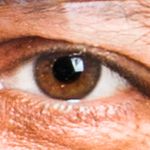- Home
- Acrobat
- Discussions
- Re: Adobe Acrobat XI Bug: Diagonal / Checkered pat...
- Re: Adobe Acrobat XI Bug: Diagonal / Checkered pat...
Adobe Acrobat XI Bug: Diagonal / Checkered pattern fill from Microsoft Excel distorted.

Copy link to clipboard
Copied
Hi,
I am bringing in charts from Excel with custom fill and a legend, and the striped patterns are getting totally distorted. Have tried various settings in both Excel and Acrobat, for resolution, dpi, import/export, images. Have tried Have tried turning off "smooth line art", "enhance thin lines", "smooth images". Have tried print to PDF option, Save as PDF, Export to PDF.
Any experience or workarounds for this problem?
In this picture, I have saved this legend as an image from a separate location in the same excel workbook. It may not translate well in this posted image

Here I have tried two separate options: Exporting the worksheet to pdf, and below it just copying over the image directly into a pdf document. As you can see, in the first image the text is sharp, but the patterns are heavily distorted. In the second image, the text is blurry but the patterns are sharp. These look even worse when printed on paper.

Any ideas on how to fix this or work around this problem would be much appreciated, thank you!
Copy link to clipboard
Copied
After digging into this matter, I came to the following conclusions:
Creating a PDF by any mean (Save as PDF by Microsoft, Acrobat Create PDF or PDF X-Change from Tracker Software) and all have similar PDFs and display problems:
PDF-Xchange viewer - PDF created by Excel's save as:

PDF-Xchange viewer - PDF created by Acrobat DC

PDF-Xchange viewer - PDF created by PDF-Xchange:

Did you notice the direction change?
Seen at a very high magnification, you see differences between the different creators because of different parameters, but the pattern is correct.
My conclusion here is that for efficiency reasons, the display is optimized and some artefacts can not be avoided with such fine patterns. This is what I see also in other PDFs created with other software.
If the finality is for screen viewing, patterns are not the best option.
Your second solution (pasting an image into the PDF) does cause a resolution problem as the text is converted to a pixel image instead of staying vector text.

Copy link to clipboard
Copied
Thank you for the reply. I appreciate your effort digging into this but I'd like to see if anyone has a way to work around the problem.
If the finality is for screen viewing, patterns are not the best option
But the patterns look perfect until I bring them into Acrobat. They are excellent for sceen viewing but Acrobat has a problem interpreting them (Or potentially office has a problem exporting them, to be fair).
In the last image I posted where I brought a picture in directly, the patterns look good (good enough to use) but the text , as you said, has become blurry by being converted to raster- which makes it unusable.
Copy link to clipboard
Copied
The problem is the display optimizations. Pattern are a lots of small squares positioned to give you the impression of being one big pattern. When Acrobat (and other display software) tries to bring that to the screen it does a fairly well job in general, but fails with such pattern.
But the patterns look perfect until I bring them into Acrobat. They are excellent for sceen viewing but Acrobat has a problem interpreting them (Or potentially office has a problem exporting them, to be fair).
Acrobat does not know anything of the pattern. Acrobat sees a lot of little square images. The problem is optimization for speed and not visual quality.

Copy link to clipboard
Copied
Thanks again for your answers. I have tried some basic steps towards reducing the effects of optimization, things in the Edit > Preferences > Page Display. I will look deeper into reducing the optimization. Would you expect the effects of display optimization to carry over into a printed document, though?
Find more inspiration, events, and resources on the new Adobe Community
Explore Now